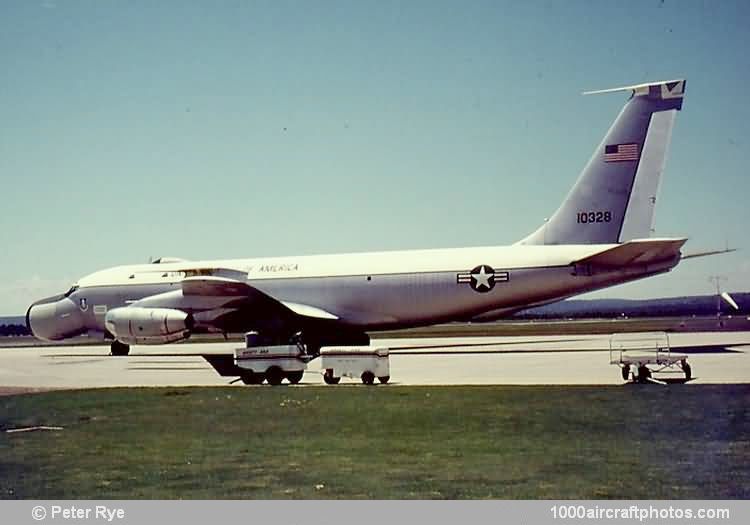10/31/2007. Remarks by Jack McKillop: "Original manufactured as a C-135A-BN Stratolifter, it was converted to an EC-135N airborne Command Post on December 27, 1967. They were also used for gathering telemetry and voice relay activities in the Apollo Program.
While assigned to the 4950th Test Wing, Aeronautical Systems Division, Air Force Systems Command at Wright-Patterson AFB, Dayton, Ohio, USA, the aircraft crashed about 1.9 mls (3,0 km) north-northeast of Walkersville, Maryland, on May 6, 1981. All 21 people aboard were killed. The accident report stated: "EC-135N aircraft 61-0328, call sign AGAR 23, was scheduled for an Advanced Range Instrumented Aircraft (ARIA) training mission out of Wright-Patterson AFB. The mission was designed provide training for the navigator and primary mission electronic equipment (PMEE) operators. On board the aircraft were 17 crewmembers and four authorized passengers (these were wives of crewmembers). AGAR 23 departed at 10:05 and climbed to FL290, which was reached at 10:30. The aircraft commander occupied the right pilot seat and a passenger, his wife, occupied the left pilot seat.
For undetermined reasons, the aircraft pitch trim moved to the full nose-down position. The autopilot can overcome the trim until near full nose-down. The aircraft then rapidly pitched over, most likely upon release of the autopilot, and induced sufficient negative g forces to cause the generators to trip off line and loss of all AC electrical power. The pitch trim could not then be moved electrically. This condition, while unusual, can be easily controlled if prompt corrective action is taken; however, if corrective action is delayed approximately 8 sec., the aircraft pitch angle will be greater than 30 deg. nose-down and the airspeed in excess of 350 KIAS. Under these conditions, the aircraft cannot be controlled until the pitch trim is moved toward neutral.
While it is clear that recovery was delayed, the reason for the delay is unknown. The aircraft became uncontrollable and entered a steep descent. The aircraft emerged from the clouds at 2,000 ft (610 m) AGL (above ground level). Airspeed was in excess of 400 kt (460 mph, 740 kmh) and dive angle was 20 to 30°. Engine power was above 2.0 EPR (engine pressure ratio. At approximately 1,500 ft (457 m) MSL (Mean Sea Level) an explosion occurred inside the pressurized compartment of the fuselage and weakened the aircraft structure to the extent that catastrophic failure of the aircraft followed immediately."
